Transform Your Space with Garden Hanging Bags: The Vertical Solution for Indoor and Outdoor Gardening
Garden hanging bags are the new trend for indoor and outdoor gardening. They offer great convenience for garden enthusiasts as they can be easily moved to any location. Garden hanging bags also add a charm to your home decor and can be used for growing a variety of plants. There are different types of garden hanging bags available in the market like fabric pots, felt planters, and pocket planters. Each type has its own set of pros and cons that consumers should consider before making a purchase. To use garden hanging bags effectively, it’s important to choose the right soil, water them properly, and select suitable plants. Avoiding common mistakes is also crucial to maintain healthy plants. So, if you’re looking for an easy and flexible way to start gardening, garden hanging bags might be just what you need!
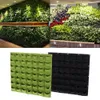
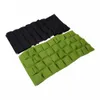
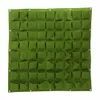
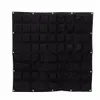
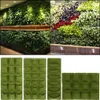
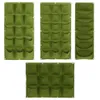
Advantages of Garden Hanging Bags:
Gardening is a relaxing and fulfilling hobby that has been enjoyed by people for centuries. Whether it be growing flowers or cultivating vegetables, the joy of seeing your efforts come to fruition is unmatched. However, not everyone has the space for traditional gardening methods. This is where garden hanging bags come in as an innovative solution for indoor and outdoor gardening.
One of the key advantages of using garden hanging bags is their convenience. They are ideal for those who live in apartments or houses with limited outdoor space. Garden hanging bags can be easily hung from a balcony, porch, or even indoors near a window. This allows for easy access and maintenance of your plants without having to worry about taking up too much room.
In addition to convenience, garden hanging bags offer flexibility in terms of location. With traditional gardening, you are limited to planting in specific areas of your yard or designated garden plot. This can be frustrating for those who want to add some greenery to their living space but do not have the traditional means to do so. With garden hanging bags, you have the freedom to place them wherever you like, allowing for creative placement that complements your aesthetic preferences.
Furthermore, garden hanging bags allow for versatility in the types of plants that can be grown. From herbs to flowers to small vegetables, garden hanging bags can accommodate a variety of plant species. This opens up the possibility for gardening enthusiasts to experiment with new plants and expand their knowledge of horticulture.
Another benefit of using garden hanging bags is that they provide optimal drainage and aeration for your plants. This ensures that your plants are receiving the necessary nutrients and water while preventing root rot and overwatering. Additionally, garden hanging bags are made from durable materials that are resistant to harsh weather conditions, making them suitable for both indoor and outdoor use.
Types of Garden Hanging Bags:
The first type of garden hanging bag is the fabric pot. Fabric pots are made from porous materials like geotextile or breathable fabric, which allows air and water to circulate around the roots of the plant. This results in healthier and faster-growing plants since they can make use of all the nutrients in the soil. Fabric pots are also lightweight and easy to move around, making them suitable for gardens where you need to constantly change the location of your plants. However, fabric pots tend to dry out faster than other types of hanging bags, which means you’ll need to water your plants more often.
The second type of garden hanging bag is felt planters. Felt planters are made from recycled materials and are excellent at retaining moisture. They’re ideal for plants that require consistent watering, such as herbs and vegetables. Like fabric pots, felt planters are also lightweight and easy to move around. However, felt planters aren’t as durable as other types of hanging bags, and may not last as long.
The third type of garden hanging bag is pocket planters. Pocket planters are made from durable plastic and are designed to hold multiple plants in individual pockets. They’re perfect for small spaces where you want to grow a variety of plants. Pocket planters are also weather-resistant and won’t degrade over time. However, they’re heavier than fabric and felt planters, which makes them less portable.
When choosing the right type of garden hanging bag for your needs, consider the type of plants you want to grow, the amount of sunlight and water they require, and the size of your garden. If you’re growing plants that require consistent watering, then felt planters may be the best option. If you’re growing a variety of plants in a small space, then pocket planters may be the way to go. And if you’re looking for a portable and lightweight option, then fabric pots are the way to go.
Tips for Using Garden Hanging Bags:
The first step is to choose the right soil for your garden hanging bag. Unlike traditional gardens, hanging bags do not have the benefit of the ground’s nutrients, so choosing the right soil is vital. Look for a high-quality potting mix that contains peat moss, vermiculite, and perlite. These ingredients will help retain moisture and provide essential nutrients to your plants.
Watering is another crucial factor that can make or break your hanging garden. You want to make sure your plants receive enough water without becoming waterlogged. The best way to check is by feeling the soil; if it feels dry an inch below the surface, it’s time to water. During hot summer months, you may need to water your hanging bags every day. If you’re unsure how much water your plants need, start with less and gradually increase the amount until you find the right balance.
Choosing the right plants is also essential when using garden hanging bags. Some plants are better suited to hanging gardens than others. Plants that naturally grow in a vertical manner, like strawberries, herbs, and cherry tomatoes, work well in hanging bags. They don’t require a lot of space and can be easily picked without bending down. Be mindful of the size of the plant you choose; larger plants may be too heavy for your bag and cause it to sag or tear.
Now that you know the basics let’s talk about common mistakes people make when using garden hanging bags and how to avoid them. One mistake is overwatering. While it’s important to keep your plants hydrated, too much water can lead to root rot and kill your plants. Remember to check the soil before watering and only water when it’s needed.
Another mistake is underestimating the weight of your plants. Garden hanging bags may look lightweight, but once they’re filled with soil and plants, they can get heavy. Make sure to hang your bags from sturdy hooks or brackets that can support the weight. Also, check the weight limit on your balcony or patio before installing your garden hanging bags.
In conclusion, garden hanging bags are a fantastic addition to any small space. By following these simple tips and avoiding common mistakes, you can create a beautiful and flourishing hanging garden. Remember to choose the right soil, water properly, select suitable plants, and hang your bags securely. With just a little care and attention, you’ll be amazed at what you can grow in your garden hanging bags!
FAQ
Q1. What are garden hanging bags?
Garden hanging bags are vertical gardening solutions that allow you to grow plants in a space-saving manner. These bags are typically made of durable materials like non-woven fabric and come with built-in pockets for planting herbs, flowers, vegetables, and more. They can be hung on walls, fences, balconies, or any other vertical surface, making them ideal for small spaces and urban gardens.
Q2. What are the benefits of using garden hanging bags?
There are several benefits to using garden hanging bags for your indoor or outdoor garden. First, they save space by utilizing vertical surfaces that would otherwise go unused. Second, they are portable and lightweight, so you can move them around easily as needed. Third, they provide good drainage and aeration, which helps prevent over-watering and root rot. Finally, they are a great way to add greenery and fresh produce to your home or yard without taking up too much space.
Q3. What types of plants can be grown in garden hanging bags?
You can grow a wide variety of plants in garden hanging bags, depending on your preferences and the growing conditions in your area. Some popular choices include herbs like basil, thyme, and mint, as well as leafy greens like lettuce and spinach. Flowers like petunias and marigolds also do well in these bags, as do vegetables like tomatoes, peppers, and strawberries. Just make sure to choose plants that are suited to the amount of sunlight and water available in your location.
Q4. How do you care for garden hanging bags?
Caring for garden hanging bags is relatively simple. To ensure proper drainage, make sure each bag has a small hole at the bottom. Water your plants regularly, but don’t over-water them, as this can lead to root rot. If possible, use a water-soluble fertilizer to provide your plants with the nutrients they need to thrive. Finally, prune your plants regularly to keep them from becoming too crowded inside the bags. With a little care and attention, your garden hanging bags will provide you with beautiful and healthy plants for years to come.



